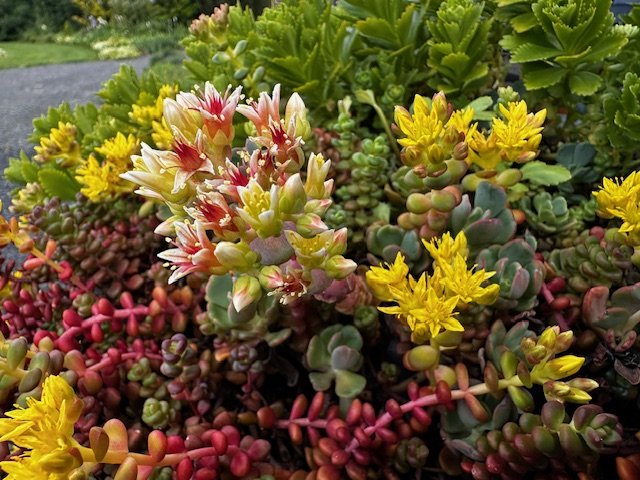

Phemeranthus (Talinum) spinescens
Phemeranthus spinescens, commonly known as Spiny Fameflower, is a hardy, drought-tolerant perennial succulent native to the arid and semi-arid regions of the Oregon and Washington. Particularly thriving in rocky outcrops, desert grasslands, and limestone soils. This compact plant forms low-growing mats of wiry, spiny stems and fleshy, cylindrical leaves, often blooming in mid to late summer with small, vivid magenta flowers that open in the afternoon sun. Exceptionally well-adapted to heat and poor soils, Phemeranthus spinescens is ideal for xeriscapes, rock gardens, and crevice gardens, where its resilience and unique texture add year-round interest. Hardy to USDA Zone 5, it prefers full sun and excellent drainage, tolerating drought with ease but susceptible to rot in overly moist conditions. Once established, it requires minimal care, making it a superb choice for low-maintenace, waterwise landscapes, if happy it will seed around a bit. The plants don’t come back to life until well into May so make sure you aren’t skipping them over. Grow this one hot and dry to keep it most compact.
Phemeranthus spinescens, commonly known as Spiny Fameflower, is a hardy, drought-tolerant perennial succulent native to the arid and semi-arid regions of the Oregon and Washington. Particularly thriving in rocky outcrops, desert grasslands, and limestone soils. This compact plant forms low-growing mats of wiry, spiny stems and fleshy, cylindrical leaves, often blooming in mid to late summer with small, vivid magenta flowers that open in the afternoon sun. Exceptionally well-adapted to heat and poor soils, Phemeranthus spinescens is ideal for xeriscapes, rock gardens, and crevice gardens, where its resilience and unique texture add year-round interest. Hardy to USDA Zone 5, it prefers full sun and excellent drainage, tolerating drought with ease but susceptible to rot in overly moist conditions. Once established, it requires minimal care, making it a superb choice for low-maintenace, waterwise landscapes, if happy it will seed around a bit. The plants don’t come back to life until well into May so make sure you aren’t skipping them over. Grow this one hot and dry to keep it most compact.









